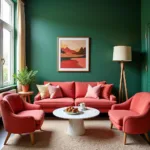Mixing colors to create new shades is a fascinating process, and many are curious about how to achieve specific hues. While blue is a primary color, meaning it cannot be created by mixing other colors, we can achieve a wide range of blue tones by blending different shades of blue or incorporating other colors into the mix. This comprehensive guide will explore various techniques and color combinations to help you achieve the perfect shade of blue for your artistic endeavors.
Understanding the Color Wheel
Before we delve into the intricacies of color mixing, it’s essential to grasp the basics of the color wheel. The traditional color wheel consists of:
- Primary colors: Red, yellow, and blue. These are the foundation, and they cannot be created by mixing other colors.
- Secondary colors: Green, orange, and violet. These are created by mixing two primary colors.
- Tertiary colors: Yellow-green, blue-green, blue-violet, red-violet, red-orange, and yellow-orange. These are created by mixing a primary color with an adjacent secondary color.
Exploring Different Blue Hues
Blue, in its various shades, evokes a sense of calmness, tranquility, and depth. From the vibrant azure of a summer sky to the deep indigo of a moonlit night, the spectrum of blue hues is vast and diverse.
Light Blue Tones
To create lighter shades of blue, you can use white paint as your base. Gradually add small amounts of blue paint until you achieve the desired lightness. Experimenting with different ratios will yield a variety of pastel blues.
Dark Blue Tones
To darken a blue hue, you can incorporate black paint. However, exercise caution, as black can quickly overpower the blue and create a muddy appearance. Start with small amounts and gradually add more until you reach the desired darkness.
Greenish Blue Tones
Introducing green into the mix can create intriguing blue-green hues, reminiscent of the ocean or turquoise gemstones. Depending on the amount of green used, you can achieve anything from a subtle teal to a vibrant aquamarine.
Mixing Blue with Complementary Colors
For a more dynamic and vibrant approach to color mixing, consider incorporating the complementary color of blue – orange. Complementary colors lie opposite each other on the color wheel and, when mixed, can create a range of neutral grays and browns. However, by adjusting the ratios, you can achieve interesting blue tones with a hint of warmth.
Expert Insight:
“Don’t be afraid to experiment with complementary colors. While they might seem counterintuitive, they can add depth and complexity to your blue hues that you wouldn’t achieve otherwise.” – John Miller, renowned Color Specialist.
Tips for Successful Color Mixing
- Start with small amounts: When mixing colors, always begin with small quantities and gradually add more until you achieve the desired shade. This allows for greater control and prevents wasting paint.
- Use a palette: A palette provides a dedicated surface for mixing colors and allows you to experiment with different ratios and combinations before applying the paint to your canvas or project.
- Document your mixtures: Keep track of the colors and ratios you use to create specific shades. This will save you time and effort in the future when you need to recreate a particular hue.
- Consider the light source: The appearance of colors can change depending on the lighting conditions. Natural daylight is ideal for color mixing, as it provides the most accurate representation of the hues.
Conclusion
While blue itself is a primary color, a world of blue possibilities awaits those willing to explore the art of color mixing. By understanding the color wheel, experimenting with different shades and tones, and incorporating complementary colors, you can create a vast spectrum of blue hues to bring your artistic visions to life. Remember, practice makes perfect, so don’t be afraid to experiment and discover your unique approach to color mixing.
FAQs
Can I mix blue with other primary colors to get different shades of blue?
Mixing blue with other primary colors will result in secondary colors. For example, mixing blue and yellow will create green, while mixing blue and red will create violet.
What is the best way to lighten a blue that is too dark?
Gradually add small amounts of white paint to the dark blue until you achieve the desired lightness. Be sure to mix thoroughly to ensure an even distribution of color.
Can I mix different brands of blue paint?
While it’s generally recommended to use paints from the same brand to ensure consistency in pigment quality and mixing properties, you can experiment with mixing different brands. However, be aware that the final results may vary.
What is the difference between a warm blue and a cool blue?
Warm blues have hints of red or yellow undertones, giving them a slightly warmer appearance. Cool blues, on the other hand, have green or blue-violet undertones, giving them a cooler, more calming effect.
How can I create a metallic blue shade?
Metallic blue paints are readily available at art supply stores. These paints contain metallic pigments that create a shimmering effect. You can also experiment with adding metallic mediums or powders to regular blue paint to achieve a similar result.
Need help with your next painting project?
Contact us at Phone Number: 0373298888, Email: [email protected] or visit our showroom at 86 Cầu Giấy, Hà Nội. Our team of color experts is available 24/7 to assist you with all your color needs.

